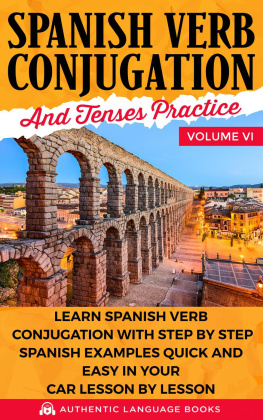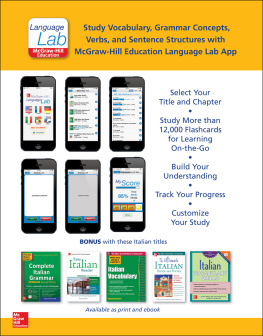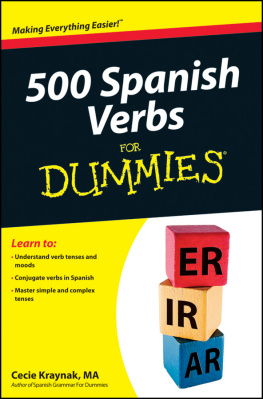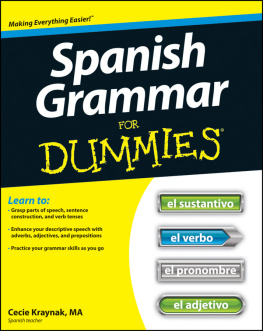
 Copyright 2012 by The McGraw-Hill Companies, Inc. All rights reserved. Except as permitted under the United States Copyright Act of 1976, no part of this publication may be reproduced or distributed in any form or by any means, or stored in a database or retrieval system, without the prior written permission of the publisher. ISBN: 978-0-07-176874-0
Copyright 2012 by The McGraw-Hill Companies, Inc. All rights reserved. Except as permitted under the United States Copyright Act of 1976, no part of this publication may be reproduced or distributed in any form or by any means, or stored in a database or retrieval system, without the prior written permission of the publisher. ISBN: 978-0-07-176874-0
MHID: 0-07-176874-2 The material in this eBook also appears in the print version of this title: ISBN: 978-0-07-176873-3, MHID: 0-07-176873-4. All trademarks are trademarks of their respective owners. Rather than put a trademark symbol after every occurrence of a trademarked name, we use names in an editorial fashion only, and to the benefit of the trademark owner, with no intention of infringement of the trademark.
Where such designations appear in this book, they have been printed with initial caps. McGraw-Hill eBooks are available at special quantity discounts to use as premiums and sales promotions, or for use in corporate training programs. To contact a representative please e-mail us at bulksales@mcgraw-hill.com. TERMS OF USE This is a copyrighted work and The McGraw-Hill Companies, Inc. (McGraw-Hill) and its licensors reserve all rights in and to the work. Use of this work is subject to these terms.
Except as permitted under the Copyright Act of 1976 and the right to store and retrieve one copy of the work, you may not decompile, disassemble, reverse engineer, reproduce, modify, create derivative works based upon, transmit, distribute, disseminate, sell, publish or sublicense the work or any part of it without McGraw-Hills prior consent. You may use the work for your own noncommercial and personal use; any other use of the work is strictly prohibited. Your right to use the work may be terminated if you fail to comply with these terms. THE WORK IS PROVIDED AS IS. McGRAW-HILL AND ITS LICENSORS MAKE NO GUARANTEES OR WARRANTIES AS TO THE ACCURACY, ADEQUACY OR COMPLETENESS OF OR RESULTS TO BE OBTAINED FROM USING THE WORK, INCLUDING ANY INFORMATION THAT CAN BE ACCESSED THROUGH THE WORK VIA HYPERLINK OR OTHERWISE, AND EXPRESSLY DISCLAIM ANY WARRANTY, EXPRESS OR IMPLIED, INCLUDING BUT NOT LIMITED TO IMPLIED WARRANTIES OF MERCHANTABILITY OR FITNESS FOR A PARTICULAR PURPOSE. McGraw-Hill and its licensors do not warrant or guarantee that the functions contained in the work will meet your requirements or that its operation will be uninterrupted or error free.
Neither McGraw-Hill nor its licensors shall be liable to you or anyone else for any inaccuracy, error or omission, regardless of cause, in the work or for any damages resulting therefrom. McGraw-Hill has no responsibility for the content of any information accessed through the work. Under no circumstances shall McGraw-Hill and/or its licensors be liable for any indirect, incidental, special, punitive, consequential or similar damages that result from the use of or inability to use the work, even if any of them has been advised of the possibility of such damages. This limitation of liability shall apply to any claim or cause whatsoever whether such claim or cause arises in contract, tort or otherwise.
Preface
Advanced Spanish Step-by-Step is a progressive program for mastering the Spanish language, written for intermediate and advanced learners. It teaches grammar and conversation in a logical order so that you can continue to develop your language skills naturally.
This book is the next step after Easy Spanish Step-by-Step. If youre just beginning with the language or need a review, Easy Spanish Step-by-Step is the place to start. To take full advantage of the unique grammatical progression of the book, you should study each chapter, or step, one after another. Each step you take will lead you to the next. Each chapter contains clear grammar explanations; be sure you understand every concept before moving on to the next. Because there are few exceptions to rules, once you have learned a concept, it is yours.
Written and oral exercises are included to check your understanding and progress. Poems and stories by acclaimed authors, as well as original stories and poems by the author of this book, are included in every chapter. These readings become progressively more challenging in form and content. The Reading Comprehension sections will help you learn new vocabulary, give you practice in reading aloud, and serve as a source for discussions with your classmates. Advanced Spanish Step-by-Step is divided into three parts. The first part reviews the present tense and uses of ser and estar, the preterit and imperfect tenses, the progressive tenses, the present subjunctive, and commands.
The second part is an in-depth explanation of nouns, articles, adjectives, pronouns, and the present and past perfect tenses. The third part covers the future and conditional tenses, the past subjunctive, and idioms. If you studied Easy Spanish Step-by-Step, youll notice a brief review of ser and estar at the beginning of the first chapter. Go over it so that you refresh the basics of these two verbs. In the second chapter, devoted mostly to the past tenses of ser and estar, there is included a review of the preterit and imperfect tenses of all verbs. The present subjunctive is included in Advanced Spanish Step-by-Step so that you can review it before continuing to the command form, which has many of the same conjugations.
All of the rest is completely new and will complete your knowledge of Spanish grammar. This book is written with a logical approach that makes Spanish grammar accessible, even when some individual concepts are difficult. With Advanced Spanish Step-by-Step, you can learn to speak fluently, using all elements of Spanish. Have fun, and enjoy speaking and understanding Spanish everywhere you need it. See you in Xochicalco!
Acknowledgments
I would like to thank John Piazza for his insights, contributions, and editing of
Advanced Spanish Step-by-Step, and to Nstor Rodriguez, teacher of English and Spanish at City College of New York, for his expertise and editing of both
Easy Spanish Step-by-Step and
Advanced Spanish Step-by-Step.
I
Ser and Estar; Present, Preterit, and Imperfect Tenses; Progressive Tenses; Present Subjunctive; Commands
1
Ser and Estar and the Present Tense
Estar (to be)
Spanish has two verbs that are equivalent to English
to be.
I
Ser and Estar; Present, Preterit, and Imperfect Tenses; Progressive Tenses; Present Subjunctive; Commands
1
Ser and Estar and the Present Tense
Estar (to be)
Spanish has two verbs that are equivalent to English
to be.
Begin with the conjugation of estar in the present tense.  There is no subject pronoun it in Spanish. l and ella refer to people and sometimes to animals, but not to things. Practice the conjugation of the verb aloud. Notice that l, ella, Ud.
There is no subject pronoun it in Spanish. l and ella refer to people and sometimes to animals, but not to things. Practice the conjugation of the verb aloud. Notice that l, ella, Ud.
Next page







 Copyright 2012 by The McGraw-Hill Companies, Inc. All rights reserved. Except as permitted under the United States Copyright Act of 1976, no part of this publication may be reproduced or distributed in any form or by any means, or stored in a database or retrieval system, without the prior written permission of the publisher. ISBN: 978-0-07-176874-0
Copyright 2012 by The McGraw-Hill Companies, Inc. All rights reserved. Except as permitted under the United States Copyright Act of 1976, no part of this publication may be reproduced or distributed in any form or by any means, or stored in a database or retrieval system, without the prior written permission of the publisher. ISBN: 978-0-07-176874-0 There is no subject pronoun it in Spanish. l and ella refer to people and sometimes to animals, but not to things. Practice the conjugation of the verb aloud. Notice that l, ella, Ud.
There is no subject pronoun it in Spanish. l and ella refer to people and sometimes to animals, but not to things. Practice the conjugation of the verb aloud. Notice that l, ella, Ud.